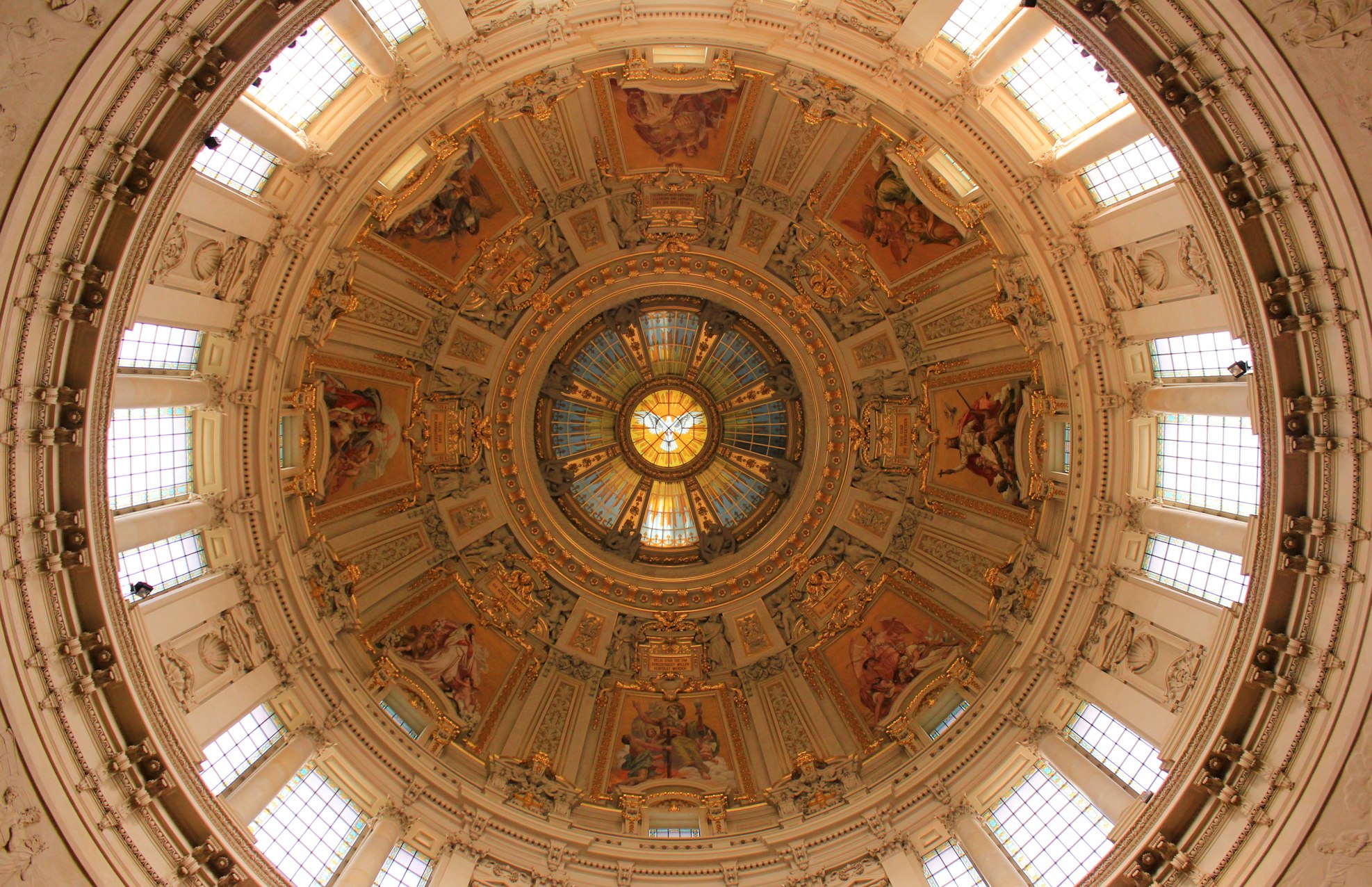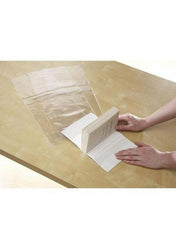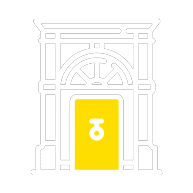
Art History for Leaving Cert
Welcome to the first edition of Art History for Leaving Cert. This pack only covers the topics below on 48 pages (12,000 words).
Georgian Architecture in Ireland
An introduction to Irish Georgian Architecture Bellamont Forest Carton House Castletown House Leinster House (sample below)
Palladian Architecture
Palladian Architects Parliament House Russborough House The Rotunda Trinity College Georgian Dublin
Neo-classical style
Charlemont House The Blue Coat School The Casino at Marino The Custom House The Four Courts
Plasterwork
Georgian decorative plasterwork (stucco) in Ireland
Gallery question sample answer
Sample – Leinster House
Leinster house.
Architect: RICHARD CASTLE/CASSELS/CASSEL
Period: GEORGIAN – (1745)
Style: PALLADIAN
- Leinster House is now Dail Eireann
- Designed for the Earls of Kildare and Leinster, The Fitzgeralds.
- At that time, area was completely undeveloped .
- James FitzGerald, 1st Duke of Leinster was warned by his friends against building a townhouse ‘in the country ’.
- Knew society would follow his example and he was right. Within twenty years, Merrion Square was being developed…
- He caused an unfashionable area of the city to become a desirable one.
- On becoming the Duke of Leinster (Dublin and Kildare are in the province of Leinster) the house was renamed Leinster House.
- Leinster House, built on the edge of Molesworth Fields is pretty much a country house constructed in town
- It remains unequalled in terms of its scale and grandeur.
THE EXTERIOR
- The house has two entrances.
- The central block is three storeys tall and 11 bays wide The building has three storeys and has a three-bay breakfront around the entrance
- The ground floor is rusticated
- The doorway is decorated with plain moulding
- There are four corinthian columns topped by a triangular pediment, connected by a balustrade
- Similar to in Castletown, the windows on the first floor are topped by alternating triangle and rounded pediments
- The forecourt on Kildare Street was originally entered through a rusticated triumphal arch
- Sadly it was later demolished with the development of the National Museum and Library which were built adjacent to Leinster House
- the original main door of the building, where visitors are received.
- Viewed from here, to the left is the National Gallery with the Natural History Museum to the right .
- A number of later monuments and memorials are located in the garden of Leinster House .
WHITE HOUSE
- It has been claimed that it formed a model for the design of the White House.
- This claim may have its origins in the career of James Hoban , who in 1792 won the competition for the design of the White House.
- He was an Irishman , born in Callan, Co. Kilkenny in 1762, and studied architecture in Dublin
- Would have had an opportunity of studying the design of Leinster House .
- His winning design was a three-storeyed building closely modelled on Leinster House (Palladian) ,
- George Washington asked that the plan be reduced to two storeys
INTERIOR
- Again, like in Castletown, inside there is a double-height hall, which has a balcony
- Much of the original decorative plasterwork by the Lanfranchini brothers survives
- The Senate is located in the bow fronted library (old first floor saloon. This room with its bow has an elaborate ceiling design ) and the Dail sits in a lecture room built within the structure by the Royal Dublin Society
- Placed great importance on the interior of their new mansion.
The main staircase
- Most elaborate staircases in Dublin
- The staircase does not rise directly out of the main hall but from a room adjacent .
- Now leads to the Seanad chamber
The front hall
- Paved in black and white squares , takes up two storeys and the original chimney piece made of Portland Stone is still there.
- The room has a coffered ceiling (series of indentations on the surface of a ceiling to create the illusion of height/ornamental decoration and is lit by the central window on the piano nobile
- Opposite these windows there are square apertures (windows) which light the upstairs corridor
The library
- On the northern end
- replaces the three small rooms on Castle’s plan
- O riginally the dining room of the Fitzgerald family.
- The library extends the width of the building , overlooking the lawn at one end and the courtyard at the other.
- Two fine marble fireplaces
The picture gallery (the Seanad chamber)
- Originally the Seanad Chamb er was used as a ballroom when owned by the Duke of Leinster
- its p roportions are the same as those of the library underneath it
- The walls of the chamber are plain

Most Choice, Least Hassle · Schoolbooks.ie

Leaving Certificate exam paper: Art History
September 16, 2022
In recent years, the Leaving Certificate exams have seen adjustments by the State Examinations Commission due to a reduction in teaching hours as a result of the Covid-19 pandemic. Exams are subject to change again in the coming years, so it is important that students are aware of what to expect. In this article, you will understand to the best of our knowledge what to expect from the upcoming Art History examination, how to find and use reliable revision resources, including revision guides, practice questions and mark schemes.
Click on one of the links below to jump to that section
- Art Leaving Certificate exam adjustments
Studying for Leaving Cert Art History
Art leaving certificate study materials, frequently asked questions, the art leaving certificate exam.
The recent exam adjustments have may only impact your Art History written paper so speak to your teacher about any specific adjustments for your year group. The Art History paper has historically consisted of three sections:
- Section I: Art in Ireland
- Section II: European Art 1,000AD - Present
- Section III: Appreciation of Art
Students will have a broad choice of questions in the examination however; in order for candidates to demonstrate their understanding of the syllabus, they will be required to answer questions from different sections of the exam paper. You must check with your teacher or the State Examinations Commission on how many answers you will be required to give. This may vary from year to year as assessment arrangements change.
You will be required to write an essay in response to each question. You will not be required to answer any short-answer questions. However, you will need to demonstrate your understanding of key terminology, definitions, and historical context. You may be required to provide a sketch as part of your response.
You are being examined on your knowledge and critical thinking. You will need to practice analysing art through the ages and provide thorough context behind the artworks. In order to succeed in this subject, you will need to work on your art history skills throughout the course. Here are some study tips to help you succeed:
- Visit art Galleries, museums and other in-person visual displays of art throughout the course. Consider the context behind both contemporary and historical pieces. Also, consider the composition .
- Practice life sketching under time pressure - you may be required to sketch in your written examination, so practice quick sketches, perhaps when you are out and about.
- Learn key terminology - get used to using appropriate visual and critical terminology to communicate your understanding of the context.
- Make yourself familiar with famous artists and artworks from all three exam paper categories (Irish Art, European Art and Appreciation of Art). Artworks and artists may come up year after year.
- Practice past exam questions - Many artists and artworks will come up time and time again. Practicing questions will ensure that you are prepared.
- Use mark schemes - you will learn how to correctly structure your answers and identify the components of top-mark answers.
- Refer to sample answers in your revision material. Since you will be writing long answer questions, it is vital that you understand how to structure your essay to achieve the highest marks possible. Example answers will help you with good structure and tone.
Unlike practical art examinations and coursework, you will primarily need to study for the written Art History examination rather than practice your artistic skills. The benefit of this is that there are plenty of resources at your disposal to help you prepare. Schoolbooks.ie offers a variety of study materials that closely follow the Leaving Certificate Art specification.
We can offer a complete revision guide for your Art History final exam. In addition to this comprehensive Art History revision guide, we also offer an Art History textbook and a New Appreciation of Art revision guide

Less Stress More Success - Leaving Cert - Art History
Expert exam tips and advice.
Highlights key information. In-context exam questions. Concise revision.
Breakdown of the exam. Past questions & guidance.
Examples of sample answers fully analysed.

Appreciating Art - New / 3rd Edition (2021)
Illustrated timelines.
Up-to-date content.
Introduction to Visual Studies, detailed diagrams, photos and artworks with compositional analyses.
Chapter Reviews.
Free eBook.

History and Appreciation of Art
Course covered in detail.
Key terminology.
Black and white line drawings help with exam sketches.
Revision questions.
Art leaving Certificate past exam papers
The best way to prepare for this written exam is by practicing exam questions before the final exam, this is especially important if you are new to written examinations. Practice exams are designed to help you prepare and make sure you know what to expect on exam day.
You can find past exam questions and mark schemes in the Schoolbooks.ie revision guides, such as in the New Appreciation of Art or the Less Stress, More Success revision guides. Alternatively, or once you have completed these and you need more practice, you can access past paper questions online here . Your exam may be different to the exam papers you have practiced online, so make sure to speak to your Art History teacher about what to expect from your specific examination paper.
How long should an art history essay be for the Leaving Certificate?
Answers to the essay questions on the Art History exam should be between 600 and 1,000 words. However, markers will be looking for quality over quantity. For this reason, you should look at our breakdown and analysis of example answers to understand what markers will be looking for and how to structure your essay.
What percentage is H1 in leaving certificate?
To get an H1 (top band grade) in a Leaving Cert for Art, the percentage boundary is between 90 and 100%. To achieve this, Leaving Certificate students should use a variety of study techniques and materials and make sure they are applying what they learn in a practical way. Refer to mark schemes and sample answers in your revision to make sure you understand the requirements for top band answers.
Related pages
Leaving Certificate exam paper:Design & Communication graphics
Leaving Certificate exam paper: Geography
Leaving Certificate exam paper: Agricultural Science
Previous Next
Your cart is empty
Subtotal:€0.00 EUR
Popular add-on

School book cover
Customer Care Team
Expert help & advice
Check your order status
Updates & tracking
All you need to know
Your questions answered
Choose options
SimpleStudy® Subject Guides
Leaving certificate art exam & revision.
The Leaving Certificate Art Exam is the final test for students studying Art as part of their Leaving Cert. Art is a very demanding subject in Ireland's Leaving Cert, but it is mixed and rewarding for those interested in a creative career. Ireland's Leaving Cert Art Course has three parts; an Imaginative Composition or Still Life Artwork: worth 37.5% of the final grade; a Themed Design or Craft Work Project, worth another 37.5% of the final grade; and a written Paper Exam on History & Appreciation of Art, worth the remaining 25% of the grade. SimpleStudy offers exclusive revision tools and learning resources for Leaving Certificate Art, Including Revision Notes, Past Exams, Quizzes, Questions by topic, and other unique features usually reserved for private schools or expensive tutors.
SimpleStudy® H1 Revision Notes
Leaving cert art notes.
Leaving Cert Art Revision Notes; study beautiful, concise and carefully curated learning materials. SimpleStudy’s LC Art Notes are broken down into curriculum focused topics, already highlighted, and structured for easy recall in an exam environment.
SimpleStudy® Past Papers
Leaving cert art exams.
Art Exams; Easily study years of LC Art Past Papers and marking schemes. Build custom Art Exams or Tests from previous Art exam questions with marking schemes for each answer. Studying Art exam papers, marking schemes and building custom exams is effective & easy with SimpleStudy.
SimpleStudy® Questions by topic
Leaving cert art questions.
Leaving Cert Art Questions; Explore LC Art state exam questions. SimpleStudy’s Art questions are divided by topic, timed, and offer a marking scheme for each question. Easily study previous Art questions, pick your topic, and simulate the exam environment with our unique timer for each Art question.
SimpleStudy® Quiz by topic
Leaving cert art quizzes.
Leaving Cert Art Quizzes; Unique LC Art quizzes designed for each topic. Practice multiple choice LC Art quizzes built to replicate short form exam questions. Pick an Art quiz, answer each quiz question, and review your results; check what answers you got, how long the quiz took you, and try to beat your high score.
SimpleStudy® Essays
Leaving cert art essays.
H1 Leaving Cert Art Essays; study perfect Art sample Essays. Concise and curated for specific LC Art Essay questions. SimpleStudy’s LC Art essays allows you read full Essays for key exam questions. Review exclusive Art essays and get full marks in your Leaving Cert Art Exam with Simplestudy’s sample Essays.
Leaving Cert Art topics to explore
Stone age art (7000bc - 2000bc), bronze age art (2000bc - 500bc), the iron age art (500bc - 500ad), early christian art (from 432ad), paul cézanne (1839-1906), claude monet (1840-1926), vincent van gogh (1853-1890), pablo picasso (1881-1973), appreciation - architecture and renovation, algebra topic.
Mathematics - Edexcel
97% of our students report improved grades
Whether you want an A+ or just less stress, we work with exam experts to help you study.

Already have an account? Log in

Art History Study Resources
Sample notes.
Students who attend The Institute of Education are provided with exclusive, exam-focussed study notes to support their home study and revision. Below are a sample of the high-quality Art History notes they receive.
Reaction to 2023 Art Visual Studies Exam
Each year, our exceptional teachers give their take on the Leaving Certificate higher level exam papers. Read what Declan Kelly, art teacher at The Institute of Education, had to say about the 2023 exam below.
Reaction to Leaving Cert 2023 Art Visual Studies (Higher Level) by Declan Kelly, Art teacher at The Institute of Education.
This was the first appearance of the new Art exam and, with only one sample paper to work from, students might have been a little trepidatious heading into the hall. While the paper opened with the most novel section, the following two parts were the most traditional and many students will have felt a wave of calm reading the titles.
The focus of section A was to get students thinking on their feet; engaging their higher order thinking to reassess and react rather than regurgitate. The first question on David Booth was lovely. As a well-known contemporary Irish artist, Booth’s style and how to discuss it would have been well known to those that are alert to the current art world. Question 5’s topical issue of galleries and their funding offered students a chance to say so much that getting it all to fit in the given spaces posed the bigger challenge.
These straightforward questions were mingled with moments that might cause students looking for a rigid approach to falter. What qualifies as “mood” in Question 2’s Wolfwalkers still gives students more freedom to interrogate their reactions, which is liberating but harder to prepare before the exam. The lateral use of ideas was essential to Questions 6 and 7. The image of the Nike runner would have appealed to those with an interest in fashion, but even those who prefer the more traditional painting or sculpture would still have the vocabulary for a strong answer. Again, very approachable, but the stress of the exam hall can make things appear trickier.
Section B: “Europe and the wider world” and Section C: “Ireland and its place in the wider world” were both lovely. Rather than asking the students to perform a complex reimagining of the material, they sought to test a solid grasp of the fundamentals. All the questions, whether on Pre-Christian, the Baroque, or Impressionism, were fair and generous opportunities for students to show what they have studied. There was clarity and simplicity across the board, so those who found their confidence knocked in Section A had a chance to end the paper on a more assured footing.
This is the positive first step of the new paper. While students might not have had the same bank of past papers to draw upon in preparing, it is also important to remember that marking schemes will also have to adapt and react to this debut.
The Institute of Excellence
Years of excellence.

Exam Results
Subjects offered.

Top Teachers
Part-time courses & grinds.

2024/25">Irish For Primary School Teaching 2024/25


6th Year">Weekly Grinds 6th Year

5th Year">Weekly Grinds 5th Year

4th Year">Weekly Grinds 4th Year

3rd Year">Weekly Grinds 3rd Year

2nd Year">Weekly Grinds 2nd Year

1st Year">Weekly Grinds 1st Year

Studying Independently">Applied Maths Studying Independently
View all courses, school newsletter, join our mailing list to get the latest news and courses on offer..
- Email Address
- Phone This field is for validation purposes and should be left unchanged.
Privacy Overview
Necessary cookies are absolutely essential for the website to function properly. This category only includes cookies that ensures basic functionalities and security features of the website. These cookies do not store any personal information.
Functional cookies help to perform certain functionalities like sharing the content of the website on social media platforms, collect feedbacks, and other third-party features.
Any cookies that may not be particularly necessary for the website to function and is used specifically to collect user personal data via analytics, ads, other embedded contents are termed as non-necessary cookies. It is mandatory to procure user consent prior to running these cookies on your website.
Undefined cookies are those that are being analyzed and have not been classified into a category as yet.
Analytical cookies are used to understand how visitors interact with the website. These cookies help provide information on metrics the number of visitors, bounce rate, traffic source, etc.
Advertisement cookies are used to provide visitors with relevant ads and marketing campaigns. These cookies track visitors across websites and collect information to provide customized ads.
Performance cookies are used to understand and analyze the key performance indexes of the website which helps in delivering a better user experience for the visitors.
Other uncategorized cookies are those that are being analyzed and have not been classified into a category as yet.
Leaving Cert Papers, News, Notes, Tips and Resources
Higher Level Exam Papers
2019 – Source 2019 – History 2018 – Source 2018 – History 2017 – Source 2017 – History 2016 – Source 2016 – History 2015 – Source 2015 – History 2014 – Source 2014 – History 2013 – Source 2013 – History 2012 – Source 2012 – History 2011 – Source 2011 – History 2010 – Exam 2010 – Source 2009 – Exam 2009 – Source 2009 – Craftwork 2008 – Exam 2008 – Source
Ordinary Level Exam Papers
2019 – Source 2019 – History 2018 – Source 2018 – History 2017 – Source 2017 – History 2016 – Source 2016 – History 2015 – Source 2015 – History 2014 – Source 2014 – History 2013 – Source 2013 – History 2012 – Source 2012 – History 2011 – Source 2011 – History 2010 – Source 2010 – Exam 2009 – Exam 2009 – Source 2009 – Design 2008 – Exam 2008 – Source 2007 – Exam 2007 – Source
Higher Level Marking Schemes
2019 2018 2017 2016 2015 2014 2013 2012 2011 2010 2009 2008 2007
Ordinary Level Marking Schemes
⚠️Want a FREE 2024/2025 Study Planner?

Mastering Leaving Cert History: A Guide to Writing Sample Essays
Updated: Feb 17

Leaving Cert History is one of the most challenging subjects for Irish students, especially when it comes to writing essays. The exam requires students to write two essays on topics chosen from a list of options. These essays carry a significant amount of marks and can make or break a student's chances of securing a good grade. However, with the right approach, mastering Leaving Cert History essays is possible. In this blog, we will provide tips and insights on how to write sample essays for Leaving Cert History.
1. Understanding the Essay Structure
The first step to writing a great essay is to understand its structure. An essay has three parts: introduction, body, and conclusion. The introduction should grab the reader's attention and provide background information on the topic. The body should include the main argument, supported by evidence and examples. The conclusion should summarise the main points and restate the thesis.

2. Choosing the Right Topic
Choosing the right topic is crucial for a successful essay. The Leaving Cert History syllabus provides a list of options for essays. It is essential to choose a topic that interests you and that you are familiar with. The topic should be narrow enough to provide a focused argument but broad enough to allow for enough research and analysis.
3. Research and Analysis
Research and analysis are crucial for a well-written essay. Start by reading through relevant texts and taking notes. Use primary sources, such as diaries, letters, and speeches, to support your argument. It is also essential to analyze the information and present a clear argument, using evidence to support your claims.

4. Writing Style and Grammar
Writing style and grammar are essential for a good essay. Use clear and concise language, avoiding slang and colloquialisms. Avoid long and complex sentences that can be difficult to understand. Make sure to proofread your work to avoid spelling and grammatical errors.
5. Time Management
Time management is crucial during the Leaving Cert exam. Make sure to allocate enough time to each section of the exam, including essay writing. Plan your essay before you start writing, including a clear thesis statement, main argument, and supporting evidence. Leave enough time for proofreading and editing.

In conclusion, writing a Leaving Cert History essay can be challenging, but with the right approach, it is possible to master it. Understanding the essay structure, choosing the right topic, research and analysis, writing style and grammar, and time management are all essential components of a successful essay. Practice writing sample essays, and seek feedback from your teachers to improve your writing skills. With these tips and insights, you will be well on your way to writing successful Leaving Cert History essays. Good luck!
Are you a Leaving Certificate student looking to improve your grades and reach your full potential?
Look no further! Our grinds service offers personalized tutoring from experienced and qualified teachers. Our tailored approach ensures that you receive the support and guidance you need to excel in your exams and achieve your goals.
With our help, you will be well-prepared and confident on the day of your exams. Don't miss out on this valuable opportunity – contact us today to learn more and start achieving your dreams!
Related Posts
Leaving Certificate LCVP Notes: Role Of The Coach & Choreographer
Leaving Certificate LCVP Notes: Rules, Rituals & Conventions
Leaving Certificate LCVP Notes: Safe Practice
History of Art Notes & Tips from an A1 Student
- leaving cert
- leaving certificate
- history of art
- Advertisement
Keeks96 wrote: » "... lived off of the rich land of the Boyne Valley in county Mayo ." I think this may be a mistake in your essay in Newgrange!
Pre Christian - Iron Age
Videos from the community ( 0 ).
Why not start the community off by adding a post or uploading a resource?
Notes from the community ( 0 )
Websites from the community ( 0 ).
Art History Leaving Cert
Exam questions and marking schemes for pre-christian era.
HIGHER LEVEL
Below are Leaving Cert Art History exam questions, together with the marking schemes for each question. This information has been compiled from the State Examinations website .
2014 Question 1

2014 Question 2
Gold-working techniques developed during the Bronze Age in Ireland allowed for the production of beautifully crafted artefacts. Discuss this statement with reference to the two examples illustrated on the accompanying sheet. In your answer name both types of artefact and refer to form, function, and the techniques used in their production and decoration. and Briefly discuss what you know about the Bronze Age people in Ireland. Illustrate your answer.

2013 Question 1
The arrival of the Celts in Ireland gave rise to a distinctive style of decoration used in stone carving and metalwork. Answer (a), (b) and (c). (a) Name and briefly discuss this style. (b) Name, describe and discuss the object illustrated on the accompanying sheet, referring to form, function, materials, decoration and the techniques used in its production. and (c) Name and briefly describe one other example of stone carving or metalwork from this period. Illustrate your answer .

2012 Question 1
Describe and discuss the development of stone carving in Ireland from the Megalithic Period to the Iron Age. In your answer include detailed reference to named examples and to form, decoration and the techniques used in their production. and Discuss briefly the function of the examples you have chosen. Illustrate your answer.

2012 Question 2
Name and discuss the two objects which are illustrated on the accompanying sheet. Refer in your answer to function, materials, skills and decorative techniques. and Briefly describe two other types of metalwork from this period. Illustrate your answer

2011 Question 1
The two pieces of neck jewellery illustrated on the accompanying sheet are examples of pre-Christian metalwork. Name, describe and discuss both examples referring to the period in which they were made, materials, form, decoration and the techniques used in their production. and Discuss briefly the influence of the La Tène style on later Irish art of the early Christian period. Illustrate your answer .

2011 Question 2
The construction techniques used in pre-Christian burial sites show some similarities with those of early Christian architecture. Discuss this statement with detailed reference to similarities in materials and techniques between one named pre-Christian example and one named early Christian example. and Discuss briefly the different functions of the examples you have chosen. Illustrate your answer .

2010 Question 1
Name, describe and discuss the two objects which are illustrated on the accompanying sheet, referring to their form, function, materials, decoration and the techniques used in their production. and Discuss briefly the periods in which they were made. Illustrate your answer.

Share this:
2 thoughts on “exam questions and marking schemes for pre-christian era”.
This is really good! Any chance you would write in sample answers?
thanks so much doing my lc in a short while this helped sm xxx
Leave a comment Cancel reply
Art history by deirdre morgan.

- Already have a WordPress.com account? Log in now.
- Subscribe Subscribed
- Copy shortlink
- Report this content
- View post in Reader
- Manage subscriptions
- Collapse this bar

IMAGES
VIDEO
COMMENTS
Length of essay and number of sketches.One to three sketches (1 minute per sketch) depending on th. amount of parts or details the question asked for. Three pages (A4) of average size handwriting is sufficient for. on 1 - Irish Section (Art in Ireland)There is always at least.
The written exam for art is 2 and a half hours long, and tests your ability to critically and creatively analyse artwork and your understanding of Visual Studies. The practical examination takes place within 5 hours of a single day. Students will have to create a second realised work, based on the same ideas and work of their overall coursework ...
Art History for Leaving Cert. Welcome to the first edition of Art History for Leaving Cert. This pack only covers the topics below on 48 pages (12,000 words). €5 . ... Gallery question sample answer. Sample - Leinster House Leinster House. Architect: RICHARD CASTLE/CASSELS/CASSEL. Period: GEORGIAN - (1745) Style: PALLADIAN.
I am building this website to help students prepare for the Leaving Cert Art History Exam. Please use the menu at the top of the page to navigate this website. This site is under construction. I would appreciate feedback or queries from viewers using the contact form below. Written by Deirdre Morgan. Updated 29th May 2021.
The Art Leaving Certificate exam. The recent exam adjustments have may only impact your Art History written paper so speak to your teacher about any specific adjustments for your year group. The Art History paper has historically consisted of three sections: Section I: Art in Ireland. Section II: European Art 1,000AD - Present.
The Leaving Certificate Art Exam is the final test for students studying Art as part of their Leaving Cert. Art is a very demanding subject in Ireland's Leaving Cert, but it is mixed and rewarding for those interested in a creative career. Ireland's Leaving Cert Art Course has three parts; an Imaginative Composition or Still Life Artwork: worth ...
History and Appreciation of Art Declan Kelly Leaving Certificate Higher Level 2020-21 Art in Ireland: Bronze Age & Iron Age. Sample questions and marking scheme CONTENTS When was the Bronze age 1 Gold Discs, Lunula and Torcs 2-4 Dress Fasteners and Gorget 5-6 ... Appreciation and History of Art. 5. th . Year. 2020-21. The Iron Age arrives (500 ...
Reaction to Leaving Cert 2023 Art Visual Studies (Higher Level) by Declan Kelly, Art teacher at The Institute of Education. This was the first appearance of the new Art exam and, with only one sample paper to work from, students might have been a little trepidatious heading into the hall.
Realism, Impressionism and Post-Impressionism. You need to sign in/up to view more questions. Art History Exam Papers divided into topics from Bronze Age to Modern Art. Marking schemes, notes and sample answers uploaded by the Studyclix community.
2012. 2011. 2010. 2009. 2008. 2007. Leaving Cert Art exam papers and marking schemes from 2007 to present day. View and download both Higher and Ordinary level papers.
In 1890 Claude Monet bought a house and land in Giverny. He built a magnificent garden there and spent the rest of his life living there until his death in 1926. He painted scenes from his garden - the pond and bridge, flowers, trees and his most famous series of waterlilies. At the end of his life Monet's paintings became more and more ...
Romanesque. The eleventh century (1000 - 1100 AD) saw peace and prosperity gradually begin to return to Europe after several centuries of war and poverty since the collapse of the Roman Empire at the end of the 5th century. Encouraged by the Catholic Church, communities began to replace their small wooden chapels with large stone churches.
However, with the right approach, mastering Leaving Cert History essays is possible. In this blog, we will provide tips and insights on how to write sample essays for Leaving Cert History. 1. Understanding the Essay Structure. The first step to writing a great essay is to understand its structure. An essay has three parts: introduction, body ...
Europe - Renaissance. Art History Exam Papers divided into topics from Bronze Age to Modern Art. Marking schemes, notes and sample answers uploaded by the Studyclix community.
There is nothing here yet. Why not start the community off by adding a post or uploading a resource? Art History Exam Papers divided into topics from Bronze Age to Modern Art. Marking schemes, notes and sample answers uploaded by the Studyclix community.
Newgrange. Introduction. Newgrange is a Passage Grave - a type of Megalithic ( large stone) Tomb consisting of a narrow passage leading to a chamber where human remains were found. Newgrange the largest megalithic Tomb in Ireland. It stands in the Boyne Valley in Co Meath near two other Passage Graves; Knowth and Dowth.
Iron Age. The Iron Age ( 500 BC to 400 AD) The Iron Age in Ireland spans almost one thousand years from the end of the Bronze Age to the start of the Early Christian Era during the fifth century AD. Knowledge of using Iron metalwork gradually spread throughout Ireland from Europe where Iron was increasingly being used in metalwork.
History of Art Notes & Tips from an A1 Student. I've just finished the Leaving Cert and after getting 625 points I'd like to share some of my notes and general tips I have, specifically for the Art exam. I'm getting rid of all my notes and books etc. and I'd like to think that someone can get some use out of them instead of just gathering dust ...
Breathe and remain calm: the more stress you place upon yourself, the less clearly you will be able to think and recall facts. Take the first 10 minutes of the exam to scan through the paper and highlighting the essay titles that you're capable of doing. If there are more than one per topic then choose the question that you feel more confident ...
Websites from the community (3) Art History Exam Papers divided into topics from Bronze Age to Modern Art. Marking schemes, notes and sample answers uploaded by the Studyclix community.
Early Bronze Age, 2200 - 2000 bc. Discovered in the roots of an old tree, this pair of discs is the largest and most sophisticated of the Early Bronze Age discs known from Ireland. A complex arrangement of raised lines, rows of dots and zig-zags has produced a central cross surrounded by concentric patterns similar to other discs but much ...
Below are Leaving Cert Art History exam questions, together with the marking schemes for each question. This information has been compiled from the State Examinations website. 2014 Question 1. It can be argued that the most impressive early tombs in Ireland were passage graves. Discuss this statement with reference to one named passage grave ...